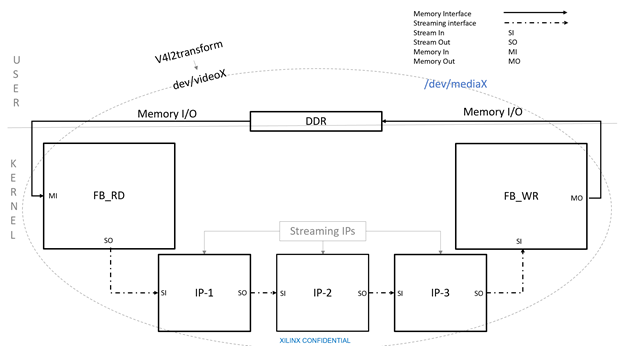Mem 2 Mem Composite Video Framework
This page is deprecated and no more supported.
The purpose of this page is to describe the usage of Xilinx Linux V4L2 Mem 2 Mem Composite video Framework driver.
Overview
The Xilinx Linux V4L2 M2M Composite Video Framework (xilinx-m2m.c) represents the whole pipeline with multiple sub-devices between Xilinx read buffer and Xilinx write buffer devices. In the V4L2 framework it is a bridge driver. The pipeline can be configured through the media node(/dev/media*), and the control operations such as stream on/off can be performed through the video node(/dev/video*).
The Xilinx Linux V4L2 M2M Composite Video Framework is designed to enable the creation of Xilinx Frame buffer read device and Frame buffer write device which move video frames from one memory buffer to another and multiple v4l2 sub-devices in between, performing some sort of transformation on the way.
The beauty of this framework is to hide the complexity of all IPs and the complex pipe treated as one device. Frames are fed to the device as if it were an ordinary mem 2 mem video device, with all of the appropriate configuration done to describe the format of those frames. The video input and output is configured with the format the application would like to have. And the in between sub-devices can be configured through media device. The driver takes frames written to the device by applications, runs them through the sub-devices, then makes them available for reading as if it were an ordinary video mem 2 mem device.
Usage
TBD
Example Designs
- Mem 2 Mem without any Sub-device
- Mem 2 Mem VPSS-CSC Composite device
- Mem 2 Mem VPSS-SC Composite device
- Mem 2 Mem VPSS-CSC & VPSS-SC device
© Copyright 2019 - 2022 Xilinx Inc. Privacy Policy
